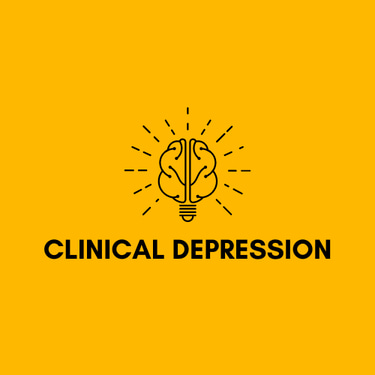For Questions: Text (833)233-0869
Virtual Therapy for Mental Health: A Comprehensive Guide to Managing Anxiety and Depression


The rise of technology has brought about significant changes in various aspects of life, including mental health care. One of the most notable advancements is the introduction of virtual therapy. This form of therapy, conducted online, is becoming an increasingly popular method for managing mental health issues like anxiety and depression. In this article, we will delve into the world of virtual therapy, exploring its benefits, how it works, and why it is an effective solution for those struggling with mental health challenges.
Understanding Anxiety and Depression
Before diving into the specifics of virtual therapy, it’s essential to understand what anxiety and depression are, how they affect individuals, and why they require professional intervention.
Anxiety is a mental health condition characterized by excessive worry, fear, or nervousness. While it is normal to experience anxiety in response to certain situations, such as an important exam or a job interview, chronic anxiety can be debilitating. It can manifest in various forms, including Generalized Anxiety Disorder (GAD), panic disorder, social anxiety disorder, and specific phobias. Common symptoms of anxiety include:
Restlessness or feeling on edge
Rapid heart rate
Shortness of breath
Trouble concentrating
Sleep disturbances
Irritability
Depression, on the other hand, is a mood disorder that causes persistent feelings of sadness, hopelessness, and a lack of interest or pleasure in activities once enjoyed. It can range from mild to severe and can significantly impact daily functioning. Symptoms of depression include:
Persistent sadness or low mood
Loss of interest in activities
Changes in appetite and weight
Sleep disturbances (insomnia or oversleeping)
Fatigue or low energy
Difficulty concentrating
Thoughts of self-harm or suicide
Both anxiety and depression can occur separately or together, often exacerbating each other's symptoms. They require professional treatment to manage effectively.
What is Virtual Therapy?
Virtual therapy, also known as online therapy, teletherapy, or e-therapy, refers to mental health counseling provided through digital platforms, such as video conferencing, phone calls, or text-based communication. Unlike traditional face-to-face therapy, virtual therapy allows individuals to connect with licensed therapists from the comfort of their homes, making mental health care more accessible and convenient.
Key Features of Virtual Therapy:
Accessibility: Virtual therapy breaks down geographical barriers, allowing individuals in remote or underserved areas to access mental health care.
Convenience: Sessions can be scheduled at flexible times, reducing the need for travel and time off work or school.
Comfort: Being in a familiar environment can help individuals feel more at ease during sessions.
Anonymity: Some people may feel more comfortable discussing sensitive topics through a screen rather than in person.
Variety of Platforms: Virtual therapy can be conducted via video calls, phone calls, or messaging, depending on the individual's preference.
Benefits of Virtual Therapy for Anxiety and Depression
Virtual therapy offers several advantages that make it an appealing option for those struggling with anxiety and depression.
Increased Accessibility: One of the most significant benefits of virtual therapy is its ability to reach people who might not otherwise have access to mental health care. This includes individuals living in rural or remote areas, those with mobility issues, or people with busy schedules who find it challenging to attend in-person sessions.
Reduced Stigma: Despite growing awareness, stigma around mental health issues still exists. Virtual therapy allows individuals to seek help privately without worrying about being seen entering a therapist's office.
Flexible Scheduling: Virtual therapy offers greater flexibility in scheduling sessions, which can be particularly beneficial for those with anxiety or depression who may struggle with maintaining a routine or attending appointments at specific times.
Comfort and Safety: Engaging in therapy from the comfort of one's home can create a sense of safety and relaxation, which may help individuals open up more during sessions. This is especially important for those with social anxiety or agoraphobia.
Continuity of Care: Virtual therapy allows for consistent care, even when life circumstances change, such as moving to a new city or traveling for work. This continuity is crucial for managing chronic conditions like anxiety and depression.
Cost-Effectiveness: Virtual therapy can sometimes be more affordable than traditional therapy, as it eliminates travel costs and reduces the overhead expenses for therapists.
How Virtual Therapy Works
The process of virtual therapy is straightforward and similar to traditional therapy, with some key differences.
Choosing a Platform: The first step in virtual therapy is selecting a platform that suits your needs. Many online therapy platforms connect you with licensed therapists, such as BetterHelp, Talkspace, and Amwell. Alternatively, you can work with a therapist who offers virtual sessions through their private practice.
Initial Assessment: Just like in-person therapy, virtual therapy begins with an initial assessment where the therapist gathers information about your mental health history, current symptoms, and treatment goals.
Setting Up Sessions: Depending on your preference, you can choose between video sessions, phone calls, or messaging. Video sessions are the most similar to traditional therapy, allowing for face-to-face interaction. Phone calls and messaging offer more flexibility and can be particularly helpful for individuals who experience anxiety in video-based interactions.
Therapy Sessions: During therapy sessions, the therapist will use evidence-based techniques, such as Cognitive Behavioral Therapy (CBT), mindfulness, or talk therapy, to help you manage your symptoms. The frequency and length of sessions can vary depending on your needs and treatment plan.
Homework and Follow-Up: Many therapists assign "homework" or exercises to practice between sessions, which can be discussed in follow-up sessions. This can include journaling, mindfulness exercises, or specific tasks to challenge negative thought patterns.
Progress Monitoring: Regular check-ins and assessments help monitor your progress and adjust the treatment plan as needed.
Challenges and Considerations
While virtual therapy offers numerous benefits, it’s important to be aware of the potential challenges.
Technical Issues: Internet connectivity problems or technical glitches can disrupt sessions, making it essential to have a reliable internet connection and a backup plan in place.
Privacy Concerns: Ensuring privacy and confidentiality is crucial in virtual therapy. It’s important to choose a platform that is HIPAA-compliant and secure. Additionally, finding a private space in your home for sessions is necessary to maintain confidentiality.
Lack of Nonverbal Cues: In virtual therapy, therapists may miss some nonverbal cues, such as body language or facial expressions, that can be important in understanding a client's emotions. This is more of an issue with phone or messaging-based therapy.
Insurance Coverage: Not all insurance plans cover virtual therapy, so it's essential to check with your provider before starting treatment.
Crisis Situations: Virtual therapy may not be suitable for individuals in crisis or those requiring immediate, in-person intervention. It's crucial to have a safety plan in place and be aware of local emergency services.
Is Virtual Therapy Right for You?
Virtual therapy can be an excellent option for many people, but it’s not the best fit for everyone. It is particularly well-suited for:
Individuals with busy schedules or limited access to in-person therapy.
Those who feel more comfortable in their own environment.
People who prefer the flexibility of choosing between video, phone, or messaging sessions.
Individuals who may experience anxiety about attending in-person sessions.
However, if you are in a crisis situation, experiencing severe mental health symptoms, or prefer face-to-face interaction, traditional therapy may be more appropriate. Consulting with a mental health professional can help determine the best course of action for your needs.
Conclusion: Embracing Virtual Therapy for Mental Health
Virtual therapy has revolutionized the way mental health care is delivered, offering a flexible, accessible, and effective option for those struggling with anxiety and depression. While it may not be suitable for everyone, it has opened up new possibilities for many individuals who might otherwise not seek help.
If you are considering virtual therapy, take the time to research different platforms, consult with professionals, and assess your own needs and preferences. With the right approach, virtual therapy can be a powerful tool in your journey toward better mental health. Remember, seeking help is the first step to recovery, and virtual therapy makes that step more accessible than ever before.
©2025
Clinical Depression
For Questions: Text
(833) 233-0869
